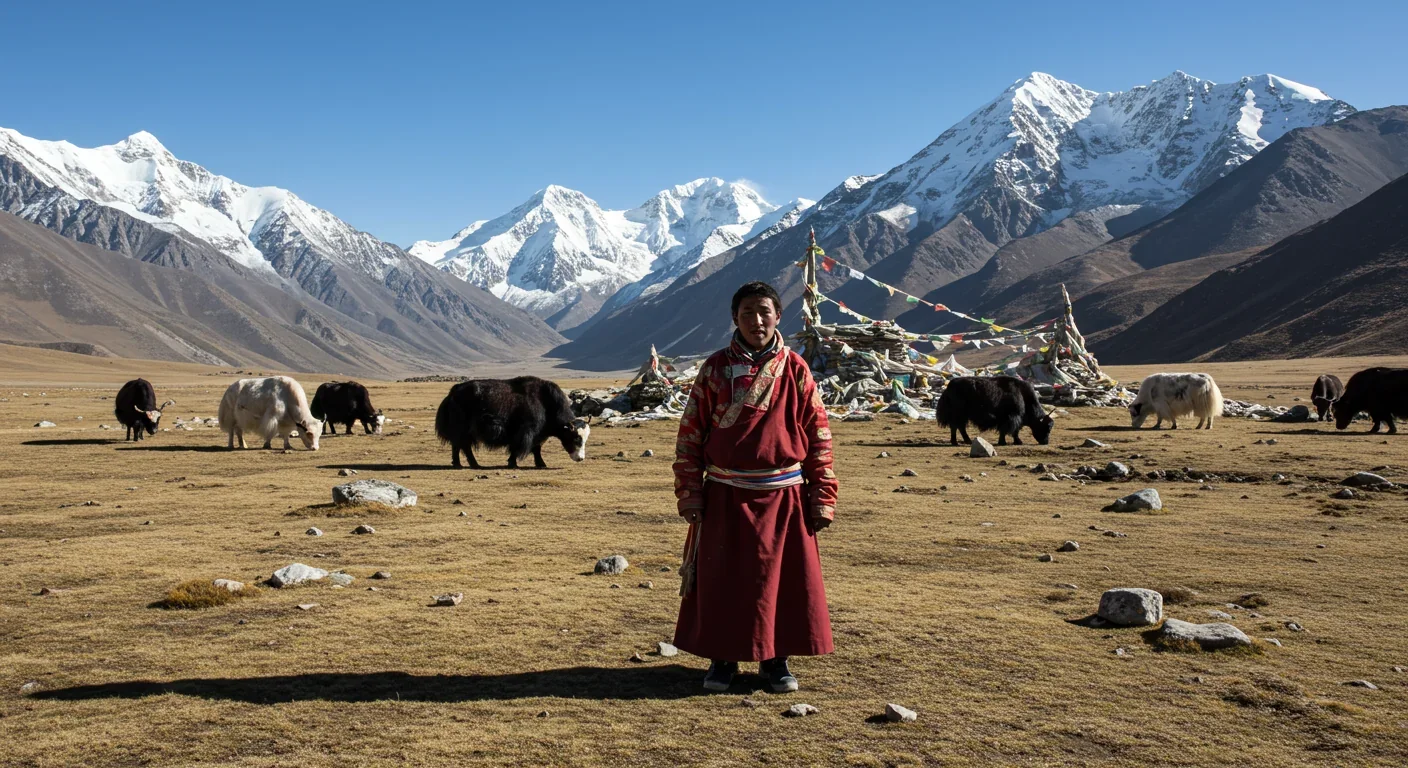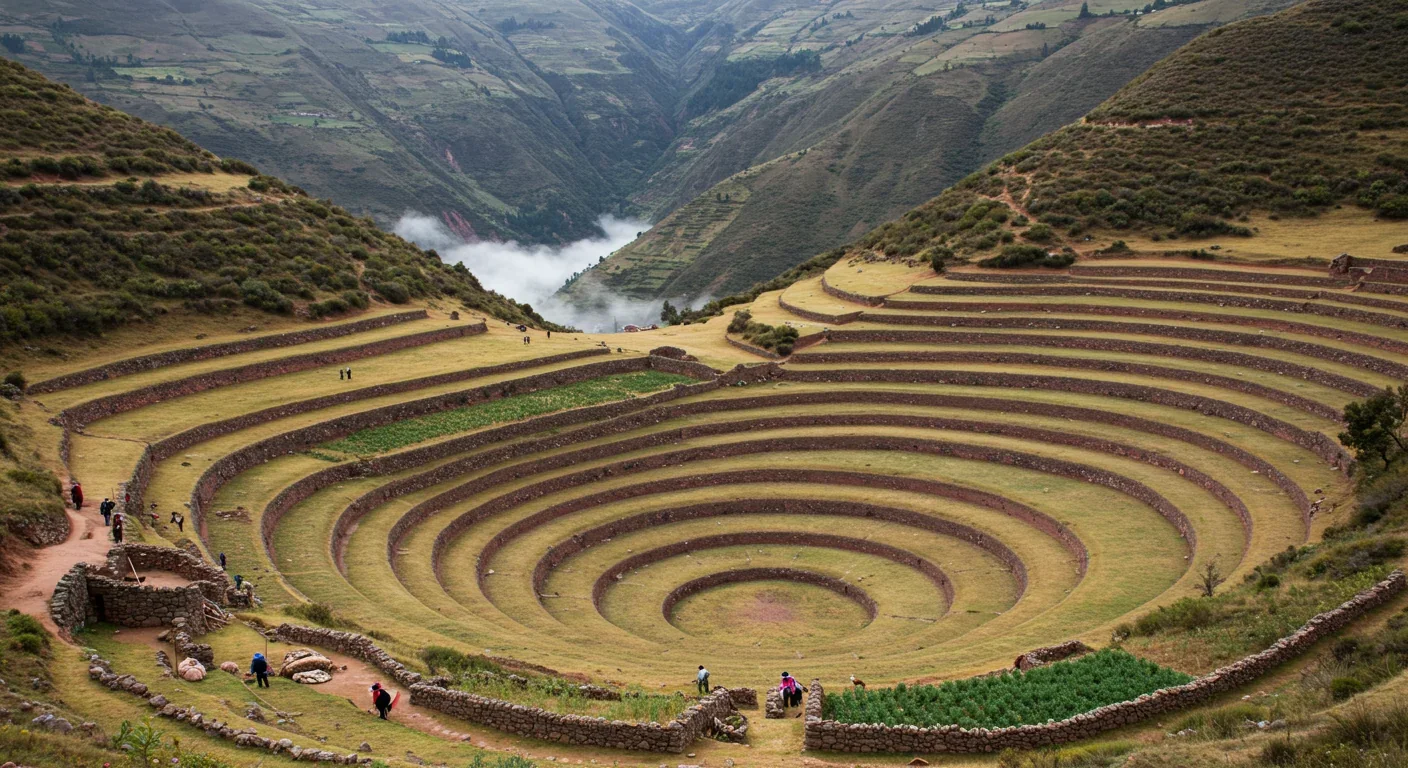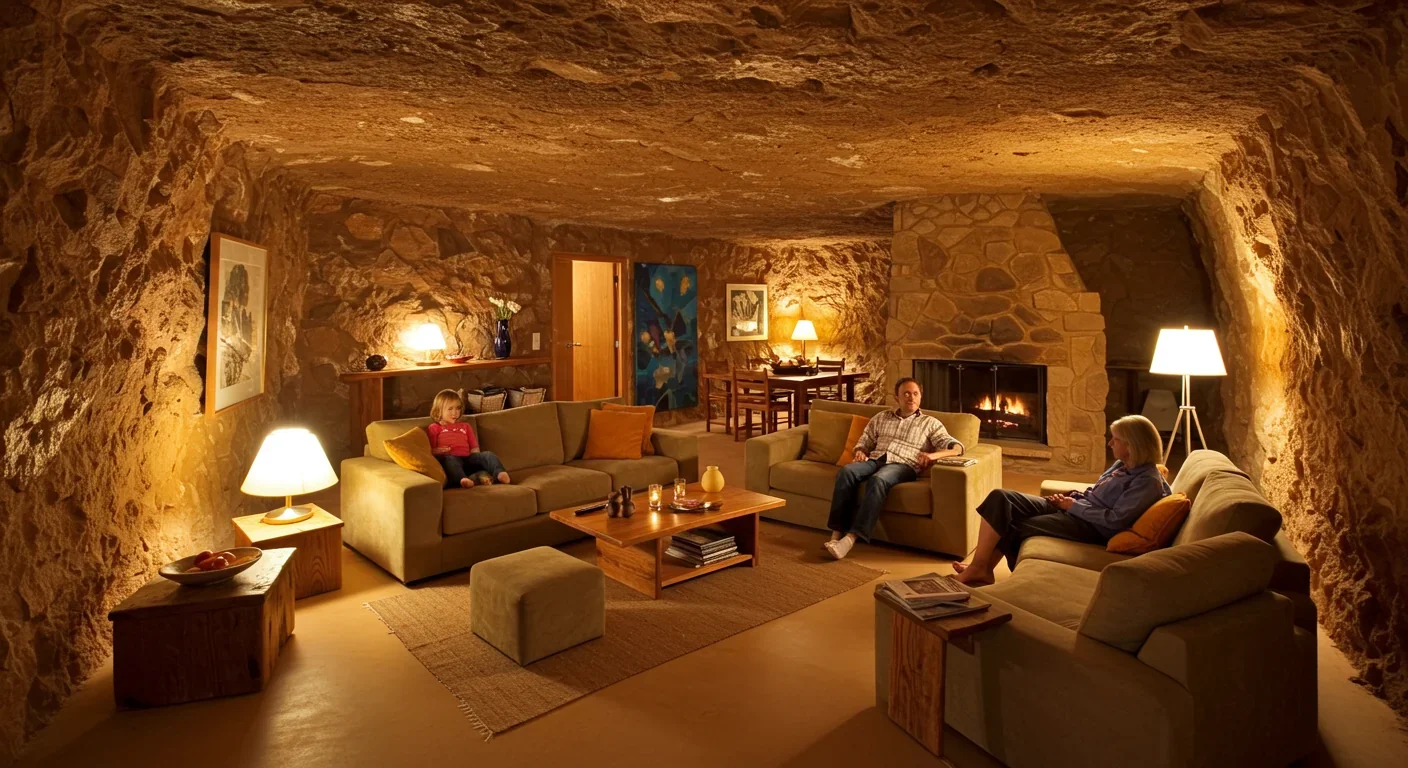Why Your Brain Sees Gods and Ghosts in Random Events

TL;DR: Humans have colonized Earth's most extreme environments through a powerful combination of genetic adaptation, cultural innovation, and technological ingenuity that offers crucial lessons for surviving climate change.

By 2025, humans occupy every continent, thriving in conditions that would kill most mammals within hours. We've built cities on frozen tundra where winter temperatures plunge to -50°C, raised families in deserts where daytime heat exceeds 50°C, and established communities at altitudes where oxygen levels would leave lowlanders gasping. For tens of thousands of years, our species has been solving the most brutal environmental puzzles nature could throw at us.
What separates us from nearly every other animal is our ability to adapt not just biologically, but culturally and technologically. While polar bears evolved thick fur over millions of years, humans figured out how to trap air in layered clothing within a few generations. That combination of quick thinking and slower genetic change has made us the most geographically diverse large mammal on Earth.
When researchers compared Tibetan highlanders to Han Chinese migrants living at 4,200 meters in Shigatse City, they found something remarkable. During a cold-water immersion test, Tibetans maintained fingertip temperatures averaging 11.32°C, while Han migrants could only manage 6.83°C. That difference separates functional hands from frostbite.
The secret lies in generations of genetic selection. Tibetans carry variants in genes like EPAS1 and EGLN1 that regulate oxygen use under chronic hypoxia. These genes don't just help with altitude, they also play a role in cold-induced thermogenesis, creating a dual advantage in the harsh Himalayan climate.
Different high-altitude populations evolved distinct solutions. Andean highlanders developed elevated hemoglobin concentrations and remodeled pulmonary circulation. Ethiopian Amhara people maintained near-sea-level ventilation patterns while achieving higher oxygen saturation than their Oromo neighbors. Three populations, three separate evolutionary experiments, all successful.
This divergence illustrates a fundamental truth: there's rarely one right answer. Biology is opportunistic, working with whatever genetic variation happens to be available when selection pressure hits.
The Arctic presents particularly vicious challenges. Temperatures that freeze exposed skin in minutes, months of darkness, and landscapes where traditional agriculture is impossible. Yet Indigenous Sami reindeer herders have thrived in northern Scandinavia for millennia.
Their solution combined mobility, animal husbandry, and deep ecological knowledge. Sami communities followed reindeer herds across seasonal migration routes, developing intimate understanding of when and where lichen would be available. They constructed portable lavvu tents and wore reindeer hide with fur oriented to trap maximum air.
The Inuit of North America developed kayaks for marine hunting, harpoons with detachable heads, and oil lamps that could heat snow houses carved from compressed ice blocks. These igloos demonstrated sophisticated thermodynamics: domed structures minimized surface area for heat loss, while small entrance tunnels prevented warm air from escaping. Inside, temperatures could reach 20°C even when outside conditions dropped to -40°C.
Dietary adaptations proved equally crucial. Arctic peoples consumed diets consisting of 50-75% fat, primarily from marine mammals. This high-fat intake provided dense calories while preventing protein poisoning. They ate organs raw to preserve vitamin C, preventing scurvy without citrus fruits.
Traditional knowledge systems taught Arctic peoples which areas had stable ground for permanent structures and which zones would shift with seasonal freeze-thaw cycles.
If the Arctic tests humans with cold, deserts do the opposite. Scorching temperatures, intense solar radiation, and water scarcity have made places like the Sahara equally hostile. Yet ancient peoples not only survived there, they built complex societies.
The Tuareg and other Saharan peoples developed counterintuitive clothing: heavy robes covering the entire body in one of Earth's hottest regions. The logic becomes clear when you understand the physics. Loose, layered fabrics create air pockets that insulate against external heat while allowing sweat to evaporate. Light colors reflect solar radiation.
Communities dug elaborate underground aqueducts called qanats that tapped into aquifers and transported water for kilometers with minimal evaporation. In places like Coober Pedy, Australia, people built entire towns underground where temperatures remain stable year-round.
Desert peoples mastered mobility and timing. Nomadic groups knew precisely when seasonal rains would green particular wadis, moving livestock to take advantage of brief abundance. They could navigate by stars, wind patterns, and subtle sand color variations that indicated water below.

High-altitude environments create a different scarcity. At 4,000 meters, atmospheric pressure drops to about 60% of sea level, meaning every breath delivers less oxygen. For lowlanders, this causes altitude sickness and potentially fatal edema. For adapted populations, it's normal life.
The physiological response involves multiple body systems. Tibetans maintain efficient pulmonary diffusion and preserved cardiac function through enhanced tissue blood flow. Their bodies don't overcompensate with excessive red blood cell production, which can increase blood viscosity. Instead, they optimize oxygen delivery with normal hemoglobin levels.
Cultural adaptations complemented biological changes. Andean cuisine emphasizes foods rich in iron and protein, supporting red blood cell production. Quinoa, potatoes, and other high-altitude crops provide calories at elevations where wheat and rice fail. Terraced farming maximized arable land on steep slopes while managing water flow.
What allowed humans to occupy extreme environments wasn't just biology. It was technology, that unique human ability to extend our bodies' capabilities through tools.
Fire might be the oldest and most transformative technology. Controlled combustion provided warmth, cooked food to extract more calories and kill pathogens, hardened wooden tools, and created social gathering spaces.
Clothing technology evolved from simple animal hides to engineered systems. Arctic peoples developed parkas with adjustable drawstrings that could trap or release heat. They understood moisture management, using different fur types in layers to wick sweat while maintaining insulation. Desert cultures wove plant fibers into breathable fabrics that blocked UV radiation.
Shelter construction shows remarkable convergence. Whether it's the aerodynamic dome of an igloo, the thick adobe walls of desert pueblos, or the steep-roofed Alpine chalets that shed heavy snow, architecture reflects deep understanding of local conditions.
The ways humans colonized extreme environments offer lessons for current challenges. Climate change is making some regions more extreme through intensifying heat waves, shifting precipitation, and thawing permafrost.
Permafrost degradation is already forcing Arctic communities to relocate as the ground beneath buildings becomes unstable. Traditional knowledge about microclimate variation and terrain stability is helping some groups identify safer settlement sites. The combination of satellite remote sensing and Indigenous ecological knowledge creates more robust predictions than either source alone.
In desert regions, ancient water management techniques are being revived. Persian qanat systems inspire modern underground water transport that reduces evaporation. Traditional architectural principles about thermal mass, natural ventilation, and solar orientation are being incorporated into contemporary desert building design.
High-altitude adaptation research is informing medicine beyond mountain communities. Understanding how Tibetan and Andean bodies manage chronic hypoxia helps doctors treat patients with lung disease, sleep apnea, and other conditions involving reduced oxygen delivery.
Perhaps most importantly, the diversity of successful adaptation strategies demonstrates there's no single solution to environmental challenges. Just as Andean and Tibetan populations evolved different physiological approaches, modern communities will likely develop varied responses based on local conditions and cultural contexts.
Traditional knowledge systems represent thousands of years of careful observation. Sami reindeer herding practices encode detailed understanding of how climate cycles affect vegetation patterns and herd health. This knowledge lives in seasonal practices and oral traditions.
Yet these systems face threats. Industrial development disrupts traditional territories. Younger generations migrate to cities, interrupting knowledge transfer. Climate change is shifting ecosystems faster than traditional adaptation timelines.
Protecting Indigenous knowledge isn't just cultural preservation, it's practical wisdom for an uncertain future. Some encouraging collaborations are emerging. Arctic climate researchers are partnering with Indigenous communities, combining satellite data with traditional observations. Desert restoration projects are incorporating traditional water management alongside modern hydrology.
The key is recognizing that Indigenous knowledge isn't primitive. It's sophisticated, empirically grounded, and precisely adapted to local conditions in ways that generalized scientific models often miss.

Understanding how humans adapted to Earth's extremes becomes more relevant as we contemplate harsher frontiers. Mars, with its thin atmosphere and extreme cold, presents challenges similar to high-altitude deserts but amplified. The lessons from Tibetan oxygen management and Arctic thermal engineering aren't direct blueprints, but they reveal principles about human adaptability.
Closer to home, urbanization is creating new extreme environments. Cities generate heat islands exceeding surrounding rural areas by 5-10°C. Urban planners are studying traditional desert architecture's natural cooling strategies.
Floating communities being designed for sea-level rise draw inspiration from traditional water-based cultures in Southeast Asia and the Amazon. The underground cities being contemplated for extreme heat regions are extensions of proven concepts from Coober Pedy and ancient Middle Eastern settlements.
What allowed humans to colonize every environment? The answer isn't one thing but a combination of traits working together.
We have impressive cognitive flexibility, able to observe problems, test solutions, and transmit successful innovations across generations through culture and language. A better trap design can spread through a population in years rather than waiting for genetic mutations.
Our social nature allows specialization. In harsh environments, groups can maintain expertise in hunting, tool-making, navigation, medicine, and food preservation.
We're remarkably omnivorous, capable of extracting nutrition from an enormous range of foods. This dietary flexibility meant we could survive on seal blubber in the Arctic, cactus fruits in the Sonoran Desert, or llama meat in the Andes.
But perhaps most importantly, we're profoundly stubborn. Humans saw environments that should have killed us and decided to live there anyway. We experimented, failed, learned, and tried again. That persistence, combined with our other advantages, made us the most geographically successful large mammal in Earth's history.
From Arctic ice to Saharan sand, from oxygen-poor mountaintops to underground retreats, humans have proven we can make ourselves at home almost anywhere. This isn't about conquest, it's about the flexible, creative, stubborn ingenuity that defines our species.
The same adaptability faces new tests as climate change reshapes familiar environments. We can't predict exactly what challenges will emerge, but we can look at how our ancestors approached the unknown: with observation, experimentation, community cooperation, and persistence.
The next time you complain about uncomfortable weather, remember there are people who chose to live where water freezes solid for eight months a year, where temperatures exceed what most mammals can survive, where every breath contains 40% less oxygen than sea level. They didn't just survive, they thrived, building rich cultures and deep knowledge systems.
That's the human story. We see impossible environments and ask "how can we live there?" Then we figure it out. Not because it's easy, but because we're the species that doesn't know when to quit. And that stubborn refusal to accept limits has made every corner of Earth our home.

Recent breakthroughs in fusion technology—including 351,000-gauss magnetic fields, AI-driven plasma diagnostics, and net energy gain at the National Ignition Facility—are transforming fusion propulsion from science fiction to engineering frontier. Scientists now have a realistic pathway to accelerate spacecraft to 10% of light speed, enabling a 43-year journey to Alpha Centauri. While challenges remain in miniaturization, neutron management, and sustained operation, the physics barriers have ...

Epigenetic clocks measure DNA methylation patterns to calculate biological age, which predicts disease risk up to 30 years before symptoms appear. Landmark studies show that accelerated epigenetic aging forecasts cardiovascular disease, diabetes, and neurodegeneration with remarkable accuracy. Lifestyle interventions—Mediterranean diet, structured exercise, quality sleep, stress management—can measurably reverse biological aging, reducing epigenetic age by 1-2 years within months. Commercial ...

Data centers consumed 415 terawatt-hours of electricity in 2024 and will nearly double that by 2030, driven by AI's insatiable energy appetite. Despite tech giants' renewable pledges, actual emissions are up to 662% higher than reported due to accounting loopholes. A digital pollution tax—similar to Europe's carbon border tariff—could finally force the industry to invest in efficiency technologies like liquid cooling, waste heat recovery, and time-matched renewable power, transforming volunta...

Humans are hardwired to see invisible agents—gods, ghosts, conspiracies—thanks to the Hyperactive Agency Detection Device (HADD), an evolutionary survival mechanism that favored false alarms over fatal misses. This cognitive bias, rooted in brain regions like the temporoparietal junction and medial prefrontal cortex, generates religious beliefs, animistic worldviews, and conspiracy theories across all cultures. Understanding HADD doesn't eliminate belief, but it helps us recognize when our pa...

The bombardier beetle has perfected a chemical defense system that human engineers are still trying to replicate: a two-chamber micro-combustion engine that mixes hydroquinone and hydrogen peroxide to create explosive 100°C sprays at up to 500 pulses per second, aimed with 270-degree precision. This tiny insect's biochemical marvel is inspiring revolutionary technologies in aerospace propulsion, pharmaceutical delivery, and fire suppression. By 2030, beetle-inspired systems could position sat...

The U.S. faces a catastrophic care worker shortage driven by poverty-level wages, overwhelming burnout, and systemic undervaluation. With 99% of nursing homes hiring and 9.7 million openings projected by 2034, the crisis threatens patient safety, family stability, and economic productivity. Evidence-based solutions—wage reforms, streamlined training, technology integration, and policy enforcement—exist and work, but require sustained political will and cultural recognition that caregiving is ...

Every major AI model was trained on copyrighted text scraped without permission, triggering billion-dollar lawsuits and forcing a reckoning between innovation and creator rights. The future depends on finding balance between transformative AI development and fair compensation for the people whose work fuels it.